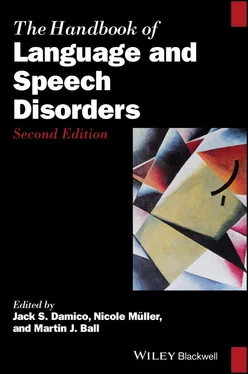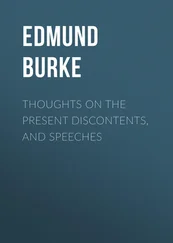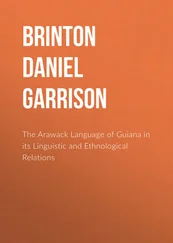4.6 Individual Differences
While still an emerging area of investigation in speech pathology, it would be a disservice to the discussion of intelligibility impairment if we did not touch upon individual differences. Traditional models of intelligibility and learning with normal‐hearing listeners are routinely developed on group averages. Acknowledgment of the variability in individual listener performance has, historically, been minimal. Further, differences have often been treated as a type of error or as justification to remove the data from the analysis. This, and the fact that intelligibility of adults without communication disorders generally hovers around ceiling, has contributed to a false sense of homogeneity among normal‐hearing listeners.
There is mounting evidence that listeners vary widely in their ability to decipher speech across populations and across the age span. Research findings clearly show there is considerable variability in the performance of different listeners who hear the same speaker (Hustad & Cahill, 2003; Hustad, Schueler, Schultz, & DuHadway, 2012; Lam & Tjaden, 2013; Pennington et al., 2013). In fact, studies report standard deviations within a given speaker across listeners of up to 17% for individuals with the most severe dysarthria (Hustad & Cahill, 2003). Other contexts that seem to heighten individual differences in intelligibility performance include the presence of background noise and unfamiliar accent. Findings suggest that some listeners are simply better equipped to tackle the demanding task of understanding speech in challenging conditions. Cognitive, perceptual, and linguistic skills have been shown to contribute to these individual differences. Specific to intelligibility and learning of the impairments associated with dysarthria, factors such as age, rhythm perception abilities, vocabulary knowledge, and working memory likely play a meaningful role in the individual variability observed (Bent, Baese‐Berk, Borrie, & McKee, 2016; Borrie, Lansford, & Barrett, 2017b; Lee, Sung, & Sim, 2014; McAuliffe, Gibson, Kerr, Anderson, & LaShell, 2013). A systematic approach to documenting how these and other listener parameters influence and interact with one another is needed. However, the current data suggest that individual differences should be given due consideration in the measurement and understanding of intelligibility impairment.
Speech intelligibility is a fundamental feature of spoken communication, involving the production of an acoustic signal by a speaker and the decoding of that signal by a listener. Intelligibility impairment is an issue across the lifespan, for a range of clinical populations that frequent the speech‐language pathologist’s caseload. For children, an understanding of developmental trajectories and the range of typical variability by age is critical for identifying those who have delays and disorders. As such, measurement of intelligibility is of essential import. However, as summarized in this chapter, such measurement is by no means a straightforward task. This is largely because intelligibility is not a unitary construct. It involves contributions from both the speaker and the listener, as well as the surrounding communicative environment. Additionally, while surprisingly understudied in the field of communication disorders, meaningful contributions to the construct of intelligibility likely arise from the dynamic, coordinative nature of spoken dialog, where production and perception are intricately and interdependently connected. Finally, to further complicate the measurement dilemma, these speaker, listener, and contextual contributions likely interact with one another in unique and variable ways. Thus, any measure of intelligibility must be viewed as an estimate, accounting for the speaker, listener, and context within which it was produced. While the task of an ecologically valid approach to capturing intelligibility is challenging, considerable progress has been made in the systematic study of large‐scale samples of both speakers and listeners for characterizing the many variables that contribute to intelligibility.
1 Ansel, B. M., & Kent, R. D. (1992). Acoustic‐phonetic contrasts and intelligibility in the dysarthria associated with mixed cerebral palsy. Journal of Speech and Hearing Research, 35, 296–308.
2 Bent, T., Baese‐Berk, M., Borrie, S. A., & McKee, M. (2016). Individual differences in the perception of regional, nonnative, and disordered speech varieties. The Journal of the Acoustical Society of America, 140(5), 3775–3786.
3 Binger, C., Ragsdale, J., & Bustos, A. (2016). Language sampling for preschoolers with severe speech impairments. American Journal of Speech‐Language Pathology, 25(4), 493–507.
4 Borrie, S. A. (2015). Visual speech information: A help or hindrance in perceptual processing of dysarthric speech. The Journal of the Acoustical Society of America, 137(3), 1473–1480.
5 Borrie, S. A., Barrett, T. S., Liss, J. M., & Berisha, V. (2020). Sync pending: Characterizing conversational entrainment in dysarthria using a multidimensional, clinically informed approach. Journal of Speech, Language, and Hearing Research, 63(1), 83–94.
6 Borrie, S. A., Barrett, T. S., Willi, M. M., & Berisha, V. (2019). Syncing up for a good conversation: A clinically meaningful methodology for capturing conversational entrainment in the speech domain. Journal of Speech, Language, and Hearing Research, 62(2), 283–296.
7 Borrie, S. A., Lansford, K. L., & Barrett, T. S. (2017a). Generalized adaptation to dysarthric speech. Journal of Speech, Language, and Hearing Research, 60(11), 3110–3117.
8 Borrie, S. A., Lansford, K. L., & Barrett, T. S. (2017b). Rhythm perception and its role in perception and learning of dysrhythmic speech. Journal of Speech, Language, and Hearing Research, 60(3), 561–570.
9 Borrie, S. A., Lansford, K. L., & Barrett, T. S. (2018). Understanding dysrhythmic speech: When rhythm does not matter and learning does not happen. The Journal of the Acoustical Society of America, 143(5), EL379–EL385.
10 Borrie, S. A., Lubold, N., & Pon‐Barry, H. (2015). Disordered speech disrupts conversational entrainment: A study of acoustic‐prosodic entrainment and communicative success in populations with communication challenges. Frontiers in Psychology, 6, 1187.
11 Borrie, S. A., McAuliffe, M. J., Liss, J. M., Kirk, C., O’Beirne, G. A., & Anderson, T. (2012). Familiarisation conditions and the mechanisms that underlie improved recognition of dysarthric speech. Language and Cognitive Processes, 27(7–8), 1039–1055.
12 Borrie, S. A., & Schäfer, M. C. (2015). The role of somatosensory information in speech perception: Imitation improves recognition of disordered speech. Journal of Speech, Language, and Hearing Research, 58(6), 1708–1716.
13 Chin, S. B., Tsai, P. L., & Gao, S. (2003). Connected speech intelligibility of children with cochlear implants and children with normal hearing. American Journal of Speech‐Language Pathology, 12, 440–451.
14 Coplan, J., & Gleason, J. R. (1988). Unclear speech: Recognition and significance of unintelligible speech in preschool children. Pediatrics, 82, 447–452.
15 Darley, F., Aronson, A., & Brown, J. (1969). Clusters of deviant speech dimensions in the dysarthrias. Journal of Speech and Hearing Research, 12, 462–496.
16 DeLong, E. R., DeLong, D. M., & Clarke‐Pearson, D. L. (1988). Comparing the areas under two or more correlated receiver operating characteristic curves: A nonparametric approach. Biometrics, 44(3), 837–845.
17 Duffy, J. R. (2012). Motor speech disorders: Substrates, differential diagnosis, and management (3rd ed.). St Louis, MO: Elsevier.
18 Dykstra, A. D., Hakel, M. E., & Adams, S. G. (2007). Application of the ICF in reduced speech intelligibility in dysarthria [case reports]. Seminars in Speech and Language, 28(4), 301–311. doi:10.1055/s‐2007‐986527
Читать дальше












